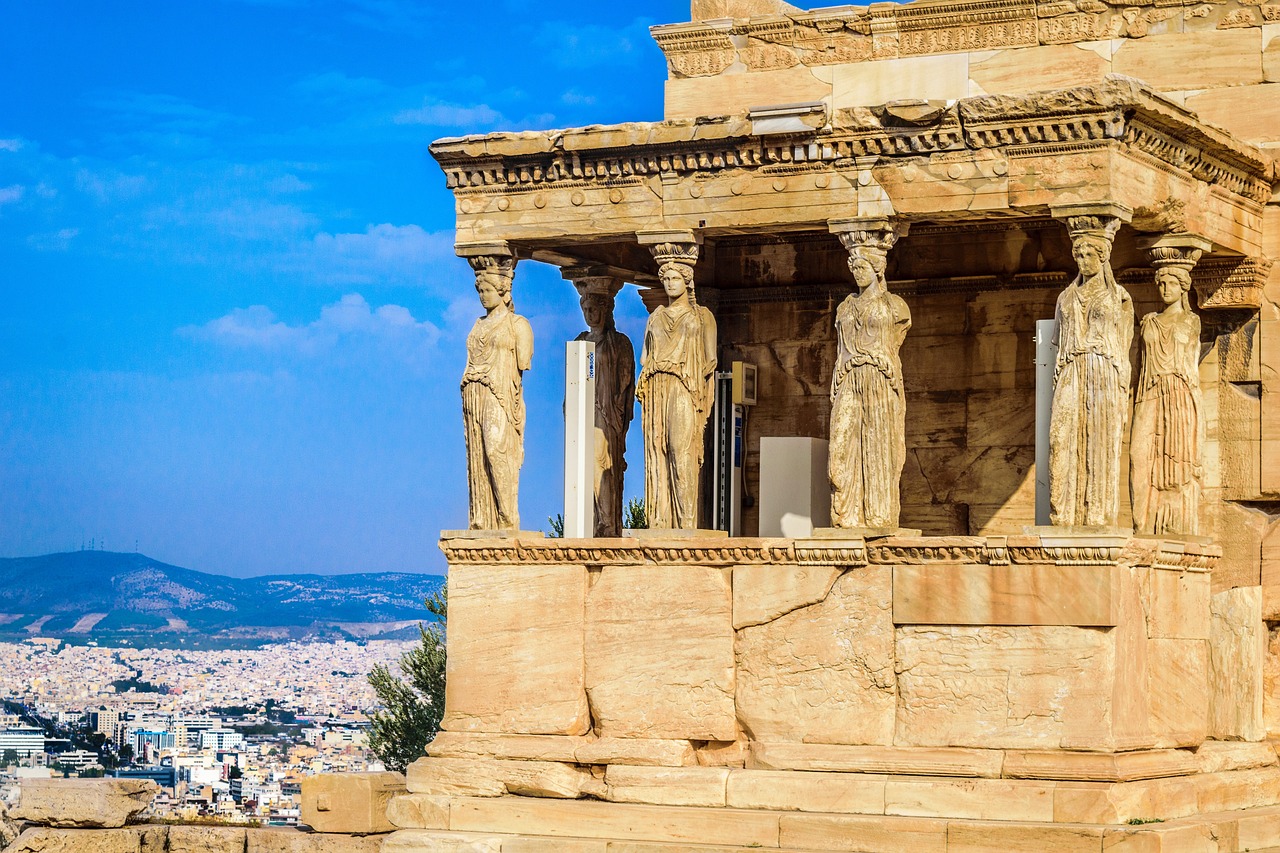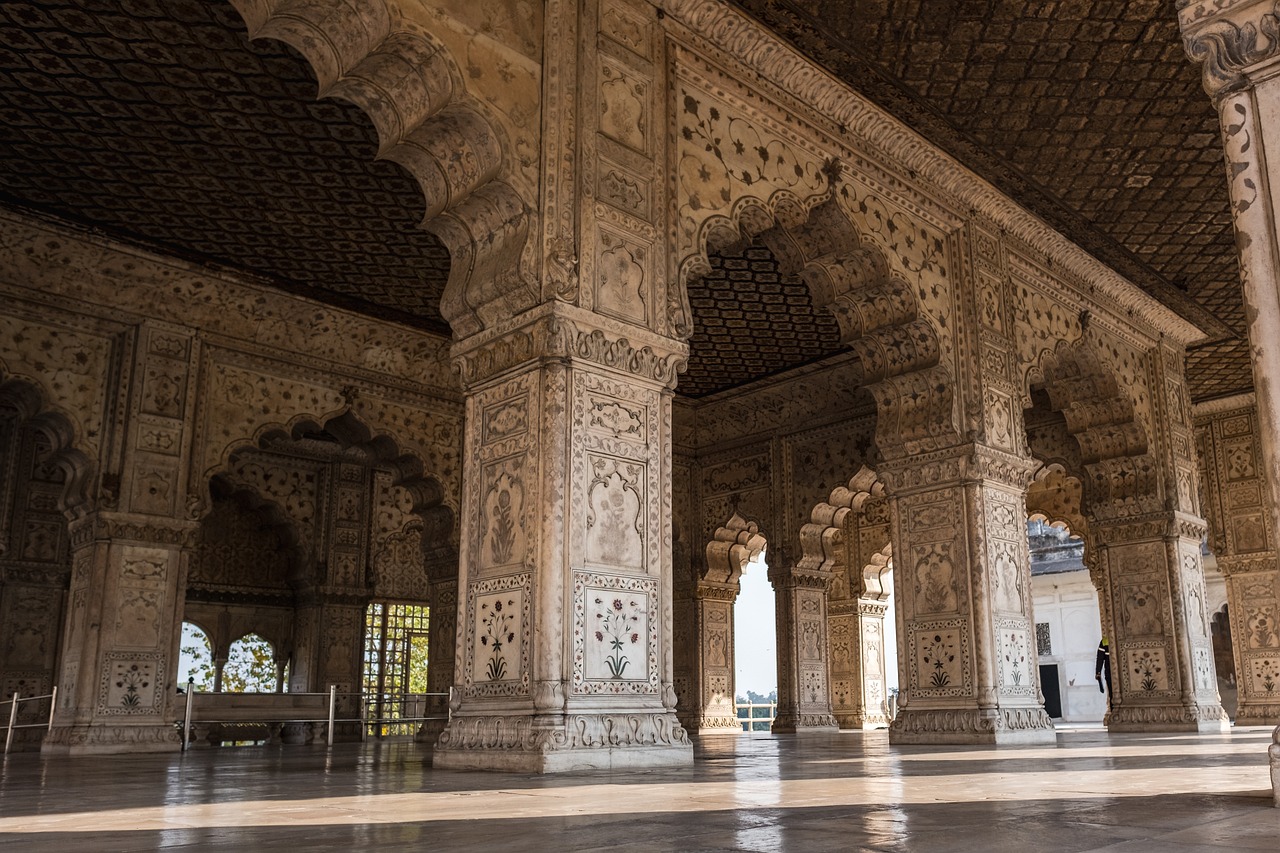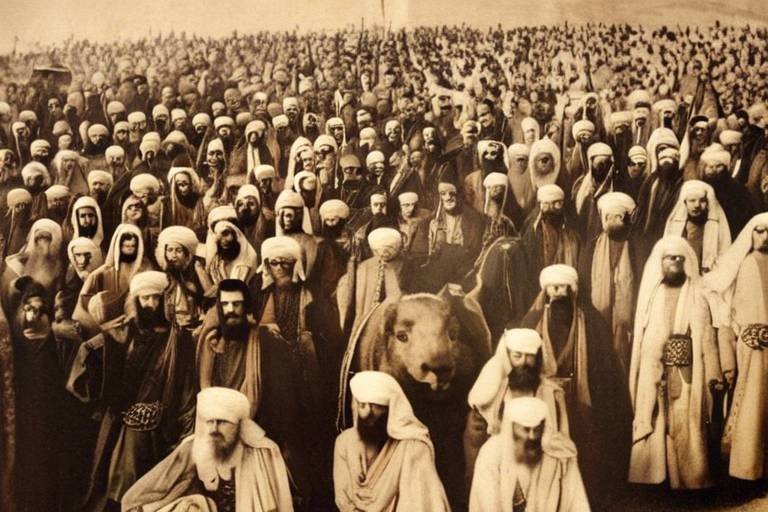The Cultural Contributions of the Nazca Civilization
Exploring the rich cultural heritage of the Nazca civilization reveals a tapestry of artistic, technological, and spiritual contributions that have captivated researchers and enthusiasts alike. From their intricate pottery to the mysterious Nazca lines etched into the desert floor, the Nazca people left a lasting imprint on ancient Peruvian society.

Nazca Pottery
Exploring the rich cultural heritage of the Nazca civilization, known for their intricate pottery, impressive textiles, mysterious Nazca lines, advanced irrigation systems, and unique burial practices. Unravel the artistic, technological, and spiritual aspects of this ancient Peruvian society.
Nazca pottery is a testament to the artistic skill and cultural significance of the Nazca civilization. The exquisite craftsmanship and symbolic motifs found in Nazca pottery showcase the creativity and attention to detail of the Nazca people. These pottery pieces come in various forms and designs, each reflecting the beliefs, rituals, and daily life of this ancient society.
The Nazca pottery often features intricate patterns and vibrant colors, representing the natural world, mythical creatures, and religious symbols. The use of geometric shapes and zoomorphic designs in their pottery highlights the spiritual connection and artistic expression of the Nazca culture.
Furthermore, the pottery served not only as decorative items but also had practical uses in Nazca society. From everyday household items to ceremonial vessels, Nazca pottery played a vital role in their daily lives and religious practices.
The cultural meanings behind Nazca pottery provide valuable insights into the beliefs and traditions of the Nazca people. Through the study of these artifacts, we can unravel the stories and rituals that shaped the identity of this ancient civilization.

Nazca Textiles
Nazca textiles are a fascinating aspect of the ancient Nazca civilization, showcasing their mastery in weaving and intricate designs. These textiles were not just fabrics; they were cultural artifacts that held deep symbolic meanings and played a significant role in Nazca society. The vibrant colors used in the textiles were not merely for aesthetic purposes but were also imbued with cultural significance, representing various aspects of their beliefs and daily life.
The Nazca people were skilled weavers, creating textiles with complex patterns and designs that reflected their connection to nature and spiritual beliefs. These intricate textiles were used for various purposes, including clothing, ceremonial attire, and even as offerings in religious rituals. Each piece of textile was a labor of love and a reflection of the rich cultural heritage of the Nazca civilization.
One of the most remarkable features of Nazca textiles is the fine weaving techniques employed by the artisans. The intricate patterns found in the textiles were created using a variety of weaving methods, showcasing the technical expertise of the Nazca weavers. These patterns often depicted animals, plants, and geometric shapes, each carrying its own symbolic meaning within the Nazca culture.
Moreover, Nazca textiles were not only visually stunning but also served as a form of communication within the society. The designs and motifs woven into the textiles conveyed messages, stories, and cultural traditions, allowing the Nazca people to preserve their history and pass down knowledge from generation to generation.
Overall, Nazca textiles are a testament to the creativity, skill, and cultural richness of the Nazca civilization. By exploring these intricate fabrics, we gain a deeper understanding of the beliefs, practices, and artistic achievements of this ancient society.

Nazca Lines
The Nazca Lines are one of the most intriguing mysteries left behind by the ancient Nazca civilization in Peru. These massive geoglyphs, etched into the desert floor, depict a variety of figures including animals, plants, and geometric shapes. The sheer size and precision of these designs have captivated archaeologists and visitors alike for centuries. Scholars have proposed various theories about the purpose of the Nazca Lines, ranging from astronomical calendars to religious symbols.
One of the most fascinating aspects of the Nazca Lines is the method by which they were created. The Nazca people, without the aid of modern technology, managed to create these intricate designs that can only be fully appreciated from the air. The precision and scale of the geoglyphs raise questions about how such a feat was accomplished with the limited tools available to the Nazca civilization.
Some researchers believe that the Nazca Lines served a ceremonial or ritualistic purpose, possibly related to the Nazca people's spiritual beliefs or agricultural practices. The alignment of the geoglyphs with celestial events has led to speculation about an astronomical significance to the Nazca Lines. Others suggest that the figures may have functioned as pathways for ceremonial processions or as markers for underground water sources in the arid desert landscape.
Visiting the Nazca Lines today offers a unique opportunity to witness these ancient creations in person. While some of the geoglyphs have been damaged over time due to natural erosion and human activity, many still retain their original form and continue to puzzle and inspire those who behold them. The preservation of the Nazca Lines remains a topic of concern, with efforts being made to protect these fragile archaeological treasures for future generations to appreciate and study.

Nazca Irrigation Systems
The Nazca civilization, known for its remarkable advancements, also excelled in developing sophisticated irrigation systems that allowed them to thrive in the arid desert environment of southern Peru. These innovative irrigation systems were crucial for sustaining agriculture and supporting the growing population of the Nazca people.
One of the key features of the Nazca irrigation systems was the construction of underground aqueducts known as "puquios." These intricate networks of underground canals tapped into the natural groundwater sources, allowing the Nazca to efficiently distribute water to their agricultural fields. The engineering marvel of the puquios ensured a consistent water supply for crops such as maize, beans, and cotton, enabling the Nazca civilization to flourish.
The Nazca irrigation systems also incorporated surface canals and channels that redirected water from rivers and streams to irrigate fields. By strategically diverting water flow and controlling its distribution, the Nazca people were able to maximize agricultural productivity in an otherwise challenging environment. This mastery of water management reflected the ingenuity and resourcefulness of the Nazca civilization.
Furthermore, the Nazca irrigation systems played a vital role in the religious and spiritual beliefs of the society. Water was revered as a sacred element, essential for fertility and life. The careful planning and maintenance of the irrigation infrastructure were intertwined with rituals and ceremonies, emphasizing the spiritual connection between water, agriculture, and the divine.
Overall, the Nazca irrigation systems not only demonstrated the engineering prowess of the civilization but also underscored their deep understanding of the natural environment and the importance of sustainable resource management. These ancient irrigation techniques continue to fascinate archaeologists and historians, shedding light on the ingenuity and resilience of the Nazca people in harnessing the power of water for their survival and prosperity.

Nazca Burial Practices
When delving into the fascinating world of the Nazca civilization, one cannot overlook the intriguing practices surrounding their burial rituals. The Nazca people had a unique way of honoring their deceased, reflecting their spiritual beliefs and societal structure. Their burial practices were elaborate and rich in symbolism, shedding light on the cultural depth of this ancient Peruvian society.
One of the most distinctive aspects of Nazca burial practices was their elaborate tombs. These tombs were carefully constructed and adorned with intricate decorations, showcasing the importance placed on the afterlife by the Nazca people. The tombs often contained offerings and grave goods, believed to accompany the deceased into the next world.
Mummification was another significant aspect of Nazca burial practices. The Nazca people practiced a form of mummification that preserved the bodies of the deceased, allowing them to maintain a lifelike appearance. This process was a testament to the reverence and care the Nazca society had for their departed loved ones.
Furthermore, the grave goods found in Nazca burials provided valuable insights into their cultural beliefs and practices. These items, ranging from pottery to textiles, were carefully selected and placed in the tombs to accompany the deceased on their journey to the afterlife. The intricate designs and symbolic motifs on these grave goods reflected the spiritual significance attributed to them.
It is evident that the Nazca civilization had a profound respect for the deceased, as reflected in their burial practices. These rituals not only honored the departed but also served as a means of preserving their cultural heritage for future generations to uncover and appreciate.

Nazca Ceremonial Centers
Nazca ceremonial centers, such as Cahuachi and Ventilla, were integral to the spiritual and religious life of the Nazca civilization. These centers served as hubs for conducting elaborate ceremonies, rituals, and gatherings that were essential to the community's spiritual well-being. The architecture of these ceremonial sites was carefully planned and constructed to align with celestial events and sacred geography, reflecting the Nazca people's deep connection to the cosmos and the earth.
At Cahuachi, the largest ceremonial center in the Nazca region, archaeologists have uncovered massive pyramids, plazas, and platforms that were likely used for various religious activities. The layout of the site suggests a complex social organization and a hierarchical structure within Nazca society. Ceremonies held at Cahuachi would have involved offerings, prayers, and possibly even human sacrifices, highlighting the importance of these rituals in the spiritual worldview of the Nazca people.
Ventilla, another significant ceremonial center, features a series of interconnected structures and platforms that may have served as gathering spaces for communal rituals and ceremonies. The orientation of these buildings aligns with the movements of the sun and other celestial bodies, indicating a sophisticated understanding of astronomy and cosmology among the Nazca civilization. The intricate designs and decorations found at Ventilla suggest a high level of artistic skill and craftsmanship, emphasizing the cultural and spiritual significance of this site.

Nazca Metalwork
The Nazca civilization was not only known for their intricate pottery and impressive textiles but also for their skillful metalwork. The Nazca people were adept at working with precious metals like gold and silver, creating exquisite artifacts that reflected their craftsmanship and artistic expression. These metal objects were often adorned with intricate designs and carried symbolic meanings that were significant in Nazca society.
The Nazca metalwork showcased the advanced techniques and artistic abilities of the civilization. The intricate designs found on the metal artifacts often depicted animals, plants, and geometric shapes, reflecting the Nazca people's connection to nature and their spiritual beliefs. These metal objects were not only decorative but also held cultural and religious significance within the society.
Gold and silver were highly valued by the Nazca civilization, and their metalwork was a testament to their expertise in working with these precious materials. The craftsmanship displayed in the metal artifacts indicated a high level of skill and artistry among the Nazca artisans, highlighting their ability to create intricate and detailed pieces that were both visually stunning and culturally meaningful.

Nazca Astronomy and Cosmology
Exploring the rich cultural heritage of the Nazca civilization, known for their intricate pottery, impressive textiles, mysterious Nazca lines, advanced irrigation systems, and unique burial practices. Unravel the artistic, technological, and spiritual aspects of this ancient Peruvian society.
The Nazca civilization's understanding of astronomy and cosmology was deeply intertwined with their spiritual beliefs and daily life. They closely observed the celestial bodies and incorporated their movements into their religious practices and architecture.
Through their artwork and alignment of sacred sites, the Nazca people demonstrated a sophisticated knowledge of astronomical events. The famous Nazca lines, although mainly known for their terrestrial depictions, also have connections to astronomical alignments, suggesting a profound understanding of celestial bodies.
The Nazca civilization's cosmological beliefs can be seen in the intricate designs of their pottery and textiles, often featuring representations of celestial symbols like the sun, moon, and stars. These artistic expressions reflect the Nazca people's reverence for the cosmos and their belief in the interconnectedness of the earthly and celestial realms.
Furthermore, the Nazca ceremonial centers, such as Cahuachi and Ventilla, were likely designed with astronomical considerations in mind. The layout and orientation of these sites may have been aligned with significant celestial events, serving as focal points for religious ceremonies and astronomical observations.
In essence, Nazca astronomy and cosmology were integral parts of the civilization's cultural identity, shaping their worldview and spiritual practices in profound ways.
- What were the Nazca lines used for? The exact purpose of the Nazca lines remains a subject of debate among scholars. Some theories suggest they had astronomical or ceremonial significance, while others propose they served as pathways for religious processions.
- How did the Nazca people create their intricate pottery? Nazca pottery was crafted using coil and slab techniques, with artists painting the vessels with mineral-based pigments before firing them in kilns. The intricate designs were often inspired by nature and religious beliefs.
- What materials were used in Nazca textiles? Nazca textiles were made from cotton and camelid fibers, dyed using natural pigments sourced from plants and minerals. The intricate patterns and vibrant colors showcased the skill and creativity of Nazca weavers.
- What significance did astronomy hold for the Nazca civilization? Astronomy played a crucial role in Nazca society, influencing their religious practices, agricultural calendar, and architectural design. The Nazca people's understanding of celestial movements shaped their worldview and cultural expressions.
Frequently Asked Questions
- What is the significance of Nazca pottery?
Nazca pottery holds great cultural significance as it showcases the artistic skill and symbolic motifs of the Nazca civilization. The intricate designs and forms found in Nazca pottery reflect the beliefs and practices of the Nazca people, providing valuable insights into their culture.
- How were the Nazca lines created?
The Nazca lines, massive geoglyphs etched into the desert floor, were created by removing the dark surface stones to reveal the lighter soil beneath. The purpose and exact methods of creating these mysterious lines are still debated among scholars, adding to their enigmatic nature.
- What is unique about Nazca burial practices?
The Nazca civilization had unique burial practices that included elaborate tombs, mummification techniques, and burial goods. These practices reflect the spiritual beliefs and social structure of the Nazca society, showcasing their reverence for the deceased and the afterlife.
- Why are Nazca irrigation systems considered advanced?
Nazca irrigation systems are considered advanced due to their innovative design and effectiveness in sustaining agriculture in the arid desert environment. These systems allowed the Nazca people to thrive and support their population, demonstrating their ingenuity in adapting to challenging conditions.
- What role did Nazca ceremonial centers play in society?
Nazca ceremonial centers, such as Cahuachi and Ventilla, served as important religious sites where ceremonies and rituals were conducted. These centers played a crucial role in the spiritual life of the Nazca people, reflecting their beliefs and practices related to worship and community gatherings.



















